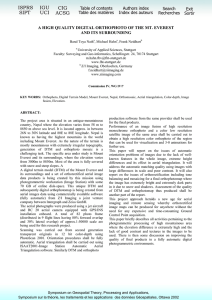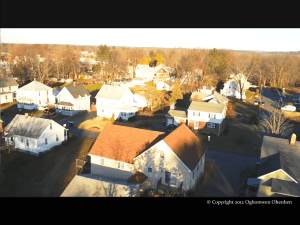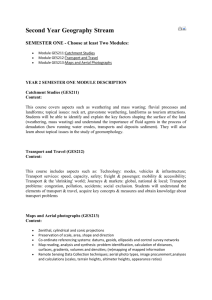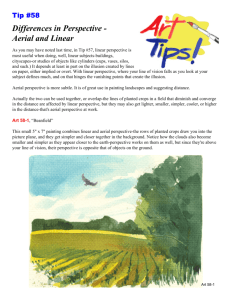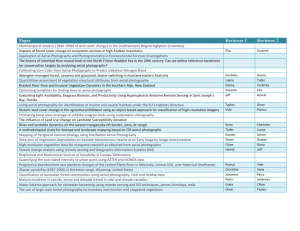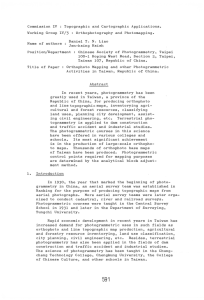Chapter 9 - WHFreeman
advertisement
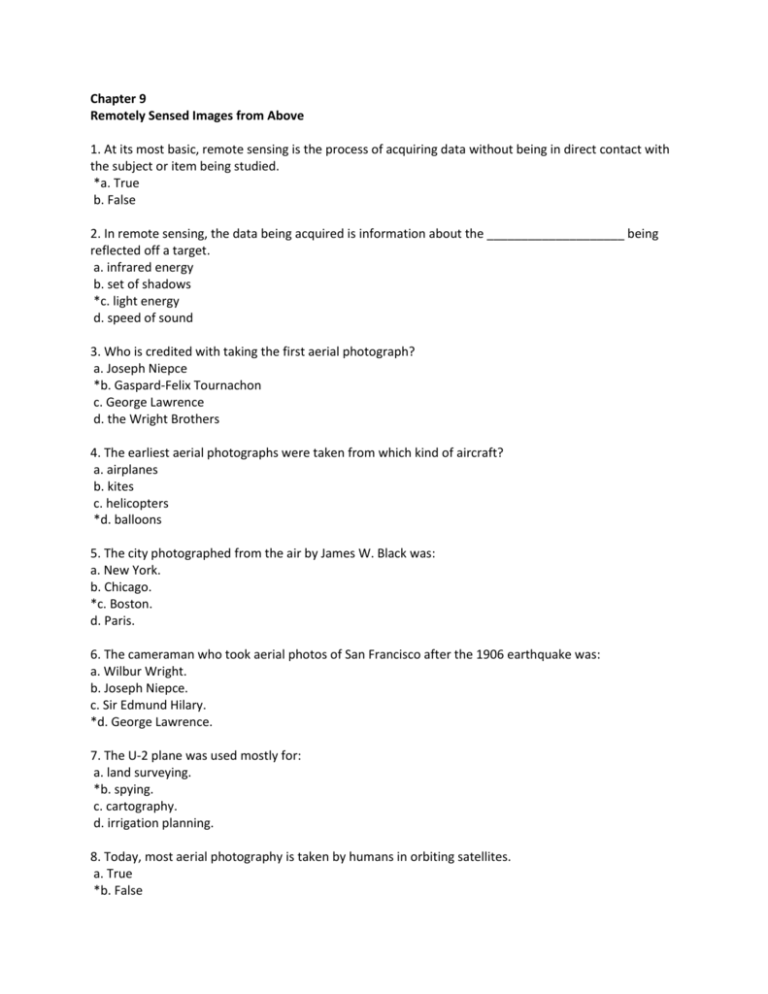
Chapter 9 Remotely Sensed Images from Above 1. At its most basic, remote sensing is the process of acquiring data without being in direct contact with the subject or item being studied. *a. True b. False 2. In remote sensing, the data being acquired is information about the ____________________ being reflected off a target. a. infrared energy b. set of shadows *c. light energy d. speed of sound 3. Who is credited with taking the first aerial photograph? a. Joseph Niepce *b. Gaspard-Felix Tournachon c. George Lawrence d. the Wright Brothers 4. The earliest aerial photographs were taken from which kind of aircraft? a. airplanes b. kites c. helicopters *d. balloons 5. The city photographed from the air by James W. Black was: a. New York. b. Chicago. *c. Boston. d. Paris. 6. The cameraman who took aerial photos of San Francisco after the 1906 earthquake was: a. Wilbur Wright. b. Joseph Niepce. c. Sir Edmund Hilary. *d. George Lawrence. 7. The U-2 plane was used mostly for: a. land surveying. *b. spying. c. cartography. d. irrigation planning. 8. Today, most aerial photography is taken by humans in orbiting satellites. a. True *b. False 9. Aerial photography is used extensively by state and local governments as well as private companies. *a. True b. False 10. Suppose you are taking a photo from the air with the camera pointing straight down. The point directly under the camera is the: a. CIR. b. panchrome. c. apex. *d. nadir. 11. Color and panchromatic are antonyms. *a. True b. False 12. In a color infrared photo, red reflection is displayed as: *a. green. b. blue. c. black. d. red. 13. In a color infrared photo, green reflection is displayed as: a. green. *b. blue. c. black. d. red. 14. Blue reflections in CIR are displayed as red. a. True *b. False 15. The tendency for tall objects in remotely sensed images to lean away from a center point and toward the edges of the image is: a. orthorectification. b. visual skewing. *c. relief displacement. d. panchromatic distortion. 16. Regular aerial photos have uniform scale. a. True *b. False 17. An orthophoto can be accurately used as a map. *a. True b. False 18. In which type of photo is the camera tilted at an angle rather than positioned directly at the nadir? a. DOQ b. DOQQ c. orthophoto *d. oblique photo 19. Which is NOT a component of visual image interpretation? a. shape b. tone c. shadow *d. aspect 20. The physical arrangement of objects in an image is its: a. size. b. shadow. *c. pattern. d. association. 21. Suppose you want to relate an object in an image to other nearby features in the image. Which of the following would you use? a. size. b. shadow. c. pattern. *d. association. 22. The dark shapes cast by an object with a source of light shining on it is: a. tone. *b. shadow. c. pattern. d. association. 23. The term used to describe the particular grayscale or intensity of a particular color of objects in an image is: a. texture. b. RBG color ramp. *c. tone. d. association. 24. Grayscale contains no red, green, or blue. *a. True b. False 25. Which common object, about 15 feet in length, can help you determine the sizes of other objects in a remotely sensed image? *a. a car b. a telephone pole c. the distance between two bases in a baseball diamond d. the distance between goalposts in a football field 26. Photogrammetry is the process of making measurements using aerial photos. *a. True b. False 27. Suppose the length of a road is shown as 3 units in a scale of 1:100, where the unit used is miles. How long is the road? a. 33 1/3 miles *b. 300 miles c. 150 miles d. 3 miles 28. Suppose photo distance (PD) is 6 inches and ground distance (GD) is 24,000 inches. What is the representative fraction? a. 3/12 b. 2/180 c. 1/1200 *d. 1/4000 29. The trigonometric function used to calculate the height of a building is: a. sine. b. cosine. *c. tangent. d. secant. 30. To find the height of an object based on its shadow, the object must be straight up and down while casting a full shadow on level ground. *a. True b. False


